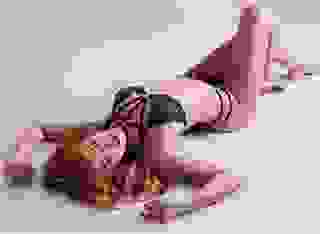Note: You can change font size, font face, and turn on dark mode by clicking the "A" icon tab in the Story Info Box.
You can temporarily switch back to a Classic Literotica® experience during our ongoing public Beta testing. Please consider leaving feedback on issues you experience or suggest improvements.
Click hereAnd a second message:
This is the old Colonel again
I almost never read long stories to the end - they die on the vine.
But you are an excellent story teller - short, tight chapters - excellent character development - your history is excellent - Jackson at Antietam - as is your depth of European culture and history - Shakespeare's Henry the night before Agincourt - and you understand politics.
But this is Literotica where too many would be novelists fail to keep the erotic bits interesting and by the time you get to chapter whatever you are turning pages and yawning - because the erotic bits have become pro forma fucking. Or vice- versa.
Readeral sent me this:
I'm a biologist so all this thing with the different species and the breeding seems a bit strange. I love the hemmer thing, it reminds me of the sexual cycles of the other mammals and the Penchens with the sexual transformation some kinds of fish. The clown fish (finding Nemo) if I remember correctly, are male and one of the school turns into female when it gets older and becomes the dominant female of the school.
I replied, and Readeral responded again:
My objection as a biologist have to do with the classical definition of species. Which is the inability to produce fertile descendants with other species. There are no living descendants when the species are much different genetically or they are sterile when the species are close (like a horse and a donkey that produce a mule)... Not to mention the differences of the DNA of the species of different planets and the number of the chromosomes etc. BUT hybrids are something that we find in Star Trek and probably other Sci-fi works and it is a nice thing and accepted in fiction so nobody should complain.
By the way did you name your hero Cook after the Explorer?
Many people wondered about that.
Readeral again, after I expressed the hope that my biological errors hadn't spoiled the story.
... the biological aspect didn't spoil the story for me or for anyone... Just imagine Star Trek without Spock! The only sci-fi writer, that I know, that mentioned the DNA differences between species is Douglas Adams. Arthur Dent travels around the galaxy by selling his rare human DNA.
We can call this next reader Bob:
I now have a series of flags that I use to decide whether to continue reading and you have managed to get past most of them without raising them. The main one being I want to read erotic stories and not porn fiction. I read somewhere on Literotica that sex should used to advance the plot, it shouldn't be the plot.
Your writing is easy to read and conversations are well written. I can't say I'm engrossed in the plot or the characters but it keeps me interested. I am impressed with the Westrons as a means for getting around my flag about harems. Most harem stories are not believable because.... (fill in the details).
My only suggestions (flags raised) are the Perfect Protagonist Syndrome, where the main character(s) is always right, talented, intelligent, attractive, big dicks and so on. Nearly every story on Literotica is like this. It makes the characters and the story a little flat if they don't develop or change or make mistakes. The second flag is the Serial Story Syndrome where a long story often meanders through the plot like a cow trail. Perhaps breaking it up into sub stories or arcs, each with their own plot, obstacles to overcome and climax and ending would help (perhaps even with different points of view). You have done this to a certain extent already (this not a major issue).
Bob again:
I wasn't planning on writing again but you generous response has led me to it.
Firstly I forgot a major plus of your plot. Your focus on and the detail about 18th century warfare. This separates it from everything else.
Secondly, Japanese light novels have their own genre for this story called "isekai" (trapped in another world). They usually have an "overpowered" protagonist (with superpowers, ho-hum). You have thankfully not gone down this path. To an extent he does have the power of knowledge, however I remember he deliberately chooses not to change the technology to save lives (wise move).
Thirdly, there are two problems (at least) with harem stories. The first is that it relies on the unlikely assumption that all women are happy with whatever they can get (or variations). Like I said, to an extent the nature of Westron sexuality resolves this problem however there is a bigger problem waiting. The more women the protagonist has hanging off him the less attention each female character gets and the less believable they become. To an extent you have reduced this problem by having Themis on hold and Kanitz and Esyle in the background and the Westrons part-time. But I wonder what's in it for Esyle and who is she anyway (for example). There are many times the protagonist explains Esyle and Tallia especially when they could do it better themselves.
This gets to my penultimate (wanted to use the word) point, about arcs. The first climax I recall was Tonol in "chapter" 6. The second was at Limset in chapter 11. Since then I think perhaps that opportunities for developing characters and plots have slipped by, they may have been mentioned in passing. Esyle and Tallia have babies with some rivalry and the protagonist seems totally detached from babies. Three new regiments with new commanders without conflict. The arrival of the Penchens with their own general who he doesn't seem to get to know or spend time with (waste of a non-female character). The arrival of five new regiments without conflict? All this seems to pass by the protagonist by without difficulty or effort. Tallia never disagrees with him nor does anyone else. I understand where the story is heading but it doesn't have to get there without incident.
Let's call this reader The Colonel (he was the first Colonel to send me feedback). The comments are long, but if you like military history, they're incredible.
I'm a retired infantry officer and lifelong history junkie. I've read several thousand SOL stories over the past decade+, but rarely communicate. When I do it is always via feedback . . . public comment strings generally make me despair for the future of human civility, though SOL is much better than most.
I think I understand the writer-reader contract: The writer writes what he/she wants and, at the end of the day, is the only one who has to be happy with it. Readers read, or don't. We have no right to expect the writer to write to please our preferences.
Still, with that as prelude, I had some observations that have the value of all unsolicited commentary . . . little or none.
I own a dozen or so black powder weapons -- Flintlocks, percussion, and some of the early black powder cartridge military weapons.
--My smoothbore British Brown Bess is a replica of the "assault rifle" of its day, serving the British and other armies for most of a century -- the basic musket of the American Revolution and the weapons carried by the Mexican soldiers when they overran the Alamo. What I have found is that, applying modern marksmanship training (breathing, trigger control, sight alignment, cheek weld, etc.) I can hit a 12"x12" pine board pretty much every time at 50 yards. That said, that is without the distractions of linear-style combat, the noise, the clouds of dust and smoke, the death, etc.
You clearly have read on the period. What I have taken from my reading is that much of the poor quality of smoothbore musketry was due to:
-- Inconsistent weapons manufacture -- as hand crafted vs. machine produced weapons, a bore might vary significantly from maker to maker,
--Inconsistent ammunition production -- a .75 caliber ball might vary from anything like .60 to .80 caliber depending on the producer or the quality of handmade soldier-carried molds. Also, even a perfect caliber ball was deformed by the ramming process so just about every round fired was a least slightly different from every other ball that weapon ever fired.
--Inconsistently produced musket barrels coupled with inconsistently produced bullets meant that, on occasion, the bullet size and barrel diameter were so out of synch that the bullet would almost literally rattle around the barrel on its way out.
--Lack of training: I think this is the biggest factor (and something which plagued the U.S. Army up to WWI) due largely to the expense of powder and lead -- I suspect a regiment that had access to significant supplies of powder and bullets would have been hell to face on an 18th century battlefield.
--Lack of trained trainers -- If your Army is apathetic toward marksmanship training, then your principal trainers are likely to be poor marksmen themselves, so it's pretty much garbage-in-garbage-out. Oddly, we had a lot of this problem in the M16 era. When I got tasked to qualify my brigade -- 3600 troops -- on rifle and pistol, I took a week to run my NCOs thru marksmanship training and found their lack of expertise disturbing,
--Low expectations -- A quality military smoothbore musket in the hands of a well-trained soldier using precisely produced powder and shot would probably be deadly at 50 meters. But that kind of accuracy and lethality was not the norm and, ergo, when marksmanship was poor, the officers (who in most 18th century armies were not professionally produced soldiers) simply said: "Well, of course. Everyone knows these things aren't accurate." With those expectations, why go to the time, expense, and frustration to do better. Oddly, I ran into this a lot when qualifying soldiers on the M1911 .45 ACP. "Everyone" knows you can't hit anything with these. Really? So, with trained trainers, good pre-marksmanship training, and training ammo, I qualified every soldier (almost 1000) I was given. Some took two tries, but it was not the weapon, it was the low expectations that led to little investment in trying to do better.
--Soldier health and nutrition -- Wellington rather famously referred to his soldiers as "the scum of the earth", largely due to the population they were drawn from -- men who probably spent most of their youth half-starved and semi-poisoned by bad food and water. Certainly a soldier with that physical history is less likely to effectively wield a 6-10 pound musket. As you describe it, I think the Westron Army does not have this problem.
--Finally, black powder is not clean burning. The large clouds of muzzle smoke make that obvious. What is less obvious unless you've fired them is that unburned powder and residue build up on the barrel until, at some point, it is so "fouled" (in the terminology of the day) that you'd almost have to use a hammer to drive a bullet into the barrel. That, plus the low expectations of musket accuracy, is why the British (and the other armies of the day) put a higher priority on bayonet training.
It sounds like the Westrons could address most of this.
Rifles:
--Presumably Cook's study included the value of the "Minie" bullet design vs. the round ball in rifles. The round ball will be much more accurate from a rifled, but the hollow-based "Minie" was a true innovation for three reasons: 1) The hollow-base would expand from the black powder pressure after detonation and grip the rifling giving a more reliable stabilizing spin than you got with round balls, 2) Because they, essentially got larger when fired, Minies could be made at a diameter to more easily slide down the barrel, reducing deformation and being more resistant to barrel fouling problems. To reliably use the rifling, round balls had to be a bit oversize so they were somewhat deformed when driven down the barrel by ramming...military muzzle loading rifle and smoothbore ammunition did not include wrapping the ball with a patch, and, 3) The shape of the Minie made it more accurate over a longer range as the bullet tended to retain velocity better than round balls.
--18th Century armies placed great value on volume of fire -- rounds fired per minute. That fits with the low expectations of accuracy -- obviously, one antidote to low hit probability per round fired is to fire more rounds. In the Napoleonic wars, the British were famous for being able to produce a higher rate of fire than the French. Whether rifle or musket, while there was a manual of arms for loading while prone, it was hell to do. Even loading while kneeling was a beast. So most soldiers would stand to re-load, even if they fired from a prone or kneeling position. That made them, as least for 15-30 seconds (depending on the soldier's training and skill) more visible and vulnerable. Breech loading rifles of the Civil War era -- added to the earlier developed "open order" and skirmishing tactics of British rifle regiments, German Jaegers, and French rifle regiments, produced the first thing that looked like modern infantry. The earlier missed opportunity (and something Cook probably would have come across in his study) was the British Ferguson Rifle, a very innovative but simple, sturdy breech loading flintlock design that was not hard to produce with 18th century technology. Perhaps if an American rifleman hadn't killed him at the Kings Mountain during the American Revolution, Major Ferguson might have been able to champion his invention more widely (he did equip a unit with them). But the Brits were very resistant to change, so his rifle died with him. Certainly, as you describe it, Weston technology could produce the Ferguson. Its value in wet weather (not impervious to it, but much better than a standard flintlock) would come as a shock to an enemy, and the rate of fire (and its ability to be loaded while prone) could be decisive.
Oh well . . .
I caveat all my feedback with: I neither request nor expect a reply, but I don't do anonymous comment, so I have included my e-mail address as a form of accountability.
The Colonel again
I never expect authors to reply, but I am always delighted when one does . . . And as a lifelong reader, I enjoy the insights in to the writing process.
I think your knowledge of weapons and tactics (to the extent it ever matters what I think) is more than adequate to drive the story your writing. It certainly doesn't detract or distract my enjoyment of it.
The Thank You: I had immediately thought about Cook introducing mass production, but I was very glad to see you resist it, and the humanitarian element of his thinking is, I believe, very much in keeping with the ethics of the man you've described.
Of course, I think you could have it both ways, I.e., when it comes to the 19th century revolution in manufacturing, "mass production" and "assembly line production" are not automatically synonymous.
Assembly line production produced consistent quality — regardless of the resources on hand — if you only had steel for 50 rifles/muskets, you still produced 50 very consistent quality rifles/muskets. What assembly line production permitted (frankly, almost screamed for) was massive up scaling. If you had the steel (and the wood and brass in the earlier days) for 10,000 rifles/muskets, you just added more assembly lines to the factory. For weapons, massive production expansion required massive improvements in steel production. In Westron's case, you could develop an assembly line process to improve quality of production, but the planet could have a very severe shortage of some component of steel production — for example, make coal a relatively rare mineral — which means MASS production of things requiring steel would always be constrained. As a side note, a lot of 17th-early-18th Century artillery was brass, so you could still have artillery, but there would be limits to caliber . . . I spent a summer on a Civil War 12-pound Napoleon crew at Kennesaw Mountain National Park...an absolutely beautiful brass gun.
With regard to the Minie. My take on military technology is that most major advancements are driven by two things (and, remember, at their heart, professional militaries are very pragmatic):
1) A gap between battlefield needs/opportunities and current capabilities drives thinking to fill the gap. Perhaps one of the best examples is that of naval gunnery. As long as ship-to-ship combat was at eyeball range via broadsides, advances were more incremental. Even then, the problem of a gun platform moving in 3 dimensions (vertically, horizontally, and time) shooting at a target moving in the same 3 dimensions was an issue — hence the term you see in just about every Napoleonic navy novel: "Fire on the up roll." As industry produced larger and larger (some of the last muzzle loading naval guns produced in the Civil War were HUGE), more accurate, rifled, breech-loading naval guns, broadside warfare became suicidal. But the 3 dimensions issue became almost insurmountable at the ranges the new guns could reach. Solving that problem took a hell of a lot of new math and never really got solved usefully until very late in the 19th century (in time for WW1 and Jutland) and was still an issue into WW2 when early computers and radar came into play.
2) You have a new toy — in this case rifles, which every modern nation began adopting after the Napoleonic War — and you have thinkers who have to think about something, so they think about how can I make this new toy better. If rifles had come into vogue en masse in 1750, I suspect someone would have come up with the Minie within a decade or so. Rifles became the next great thing only at the conclusion of the Napoleonic Wars, and a Minie style design was being dabbled with at least as early as about 1830 . . . 15 years after Waterloo.
As you suspected, the Minie was in use in the Crimean War. An unexpected side effect of its adoption was that — whereas round balls tended to stay in the body and often move in unusual directions after impact — the shape and stability of the Minie tended to produce relatively straightforward thru-and-thru wounds that were more treatable if they weren't immediately lethal, e.g., head shot or heart. BUT, there is a huge asterisk there: Round ball or Minie, you are still hitting a soft body with a large chunk of soft lead. The round ball would deform more than a Minie, but if either hit a bone, it shattered, and if a major artery was hit, the bleeding was massive. Don't know what the state of Westron battlefield medicine is, but Cook could make a huge impact if they don't have anesthetic by pushing them to look for one. Despite the movies, ether/chloroform was well understood and almost universally used in the Civil War . . . Most surgeries were, in fact, performed under anesthetic. In major battles, the supply of anesthetic might be exhausted and then the surgery was every bit as horrible as advertised.
One other thought: Rate of fire. If limited Westron production was able to produce say, 200 Fergusons:
— A VERY well trained Ferguson rifleman (loading from the prone, covered and concealed) could fire 10 aimed shots a minute. An average Ferguson rifleman could fire 6 aimed shots a minute.
— A VERY well trained Brown Bess soldier could load and fire 6 shots (probably unaimed — rifle to shoulder, pull trigger) a minute. The goal routinely achieved by the British army was 3 shots per minute. French was about 2 shots, which the Brits thought gave them a significant edge over the French. For all the reasons mentioned in the first email, rate of fire was emphasized more than accurate fire.








